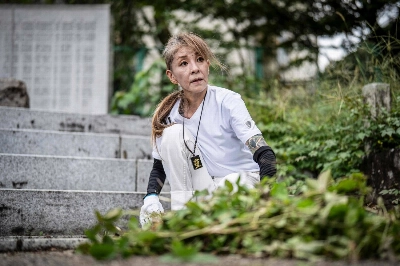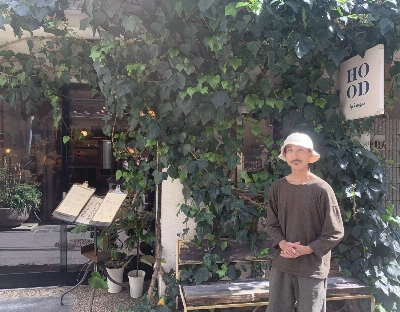KOBE -- Two years after the Great Hanshin Earthquake hit this port city on Jan. 17, 1995, Kengo Tanaka has depleted his savings as well as the 3.5 million yen he borrowed from the national government's relief fund."I cannot foresee my future," said Tanaka, 52, who lives with his 75-year-old mother and his 6-year-old daughter in a six tatami-mat temporary shelter set up in Suma Ward's Shimonakajima Park. The quake destroyed his home, and his synthetic shoe factory in Nagata Ward was razed in subsequent fires.He has no means to rebuild his shop, and few jobs are available here for middle-aged men. "It's impossible for me to borrow the 30 million yen, 50 million yen I need to restore my business because I don't have guarantors or mortgages," said Tanaka, who serves as leader of an eight-household tent village set up in the park. "Having emptied my savings, I don't know how we can survive," he said. "We have no choice but to live here this way."For those like Tanaka left homeless by the quake, little has changed for the better over the past two years. Some 38,000 families, about 69,000 people, still live in temporary public housing units. But more than 100 other families, like Tanaka's, remain in worse conditions -- either camping in parks or taking shelter in public facilities such as schools and public halls.About 40 percent of the households at such public housing units consist of the elderly, headed by people aged 65 or older. About 70 percent of the dwellers are low-income earners whose annual wages are below 3 million yen, according to a survey conducted by the Hyogo Prefectural Government last May. By early this month, the toll of "lonely deaths" -- incidents in which elderly residents have died alone in temporary housing units -- had reached 121.Since the quake, 177 billion yen has been donated by the public to provide relief, and local as well as national governments provide assistance programs. But these are insufficient to help quake-victims like Tanaka return to the lives they led before the disaster.To ease the situation, some local residents are urging Diet members to take legislative action to help quake survivors. "Those who had sufficient finances have already restored their livelihoods themselves. But there are too many people who don't have such means," said Masaharu Yamamura, secretary general of the Promotion Headquarters to Realize Citizens and Diet Members' Legislation, based in Ashiya, Hyogo Prefecture.Yamamura criticized the national government for refusing to provide sufficient financial assistance to individuals, even when their needs stem from a major disaster such as the Great Hanshin Earthquake. The government depends too much on volunteers and public donations, without providing enough from its own resources, he said. "If the national government can spend billions in taxpayers' money to save (the failed 'jusen') housing loan companies, how can it fail to support quake survivors who have paid taxes?" he asked.The citizens' group has drafted an outline for a program to provide financial assistance to the quake survivors. Under the program, up to 5 million yen will be provided to households whose homes were damaged by the quake, and up to 20 million yen in long-term loans to be interest-free for 10 years will be offered to those who rebuild their homes.Small and medium-size business owners will be able to borrow up to 150 million yen under easier terms, and low-income survivors will receive 2 million yen to stabilize their livelihoods, members of the group said. Such a program is estimated to cost 2 trillion yen.So far 75 Diet members have said they are in favor of the group's idea, and about 30,000 people have signed a petition calling for legislation to carry out the program. The group is hoping the Diet members will draft a bill on the program during the upcoming regular session.
9 mins ago

















With your current subscription plan you can comment on stories. However, before writing your first comment, please create a display name in the Profile section of your subscriber account page.